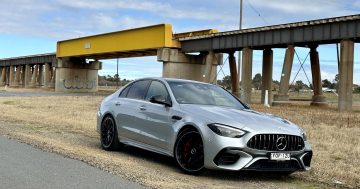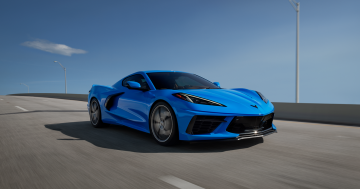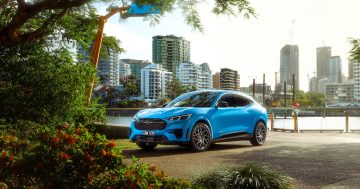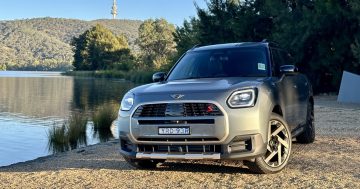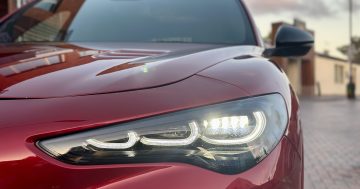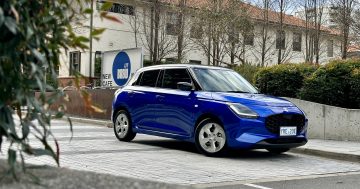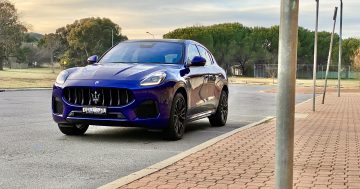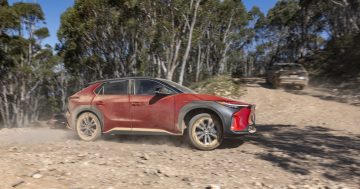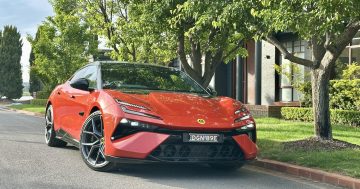Reviewed by Karl Peskett.

We live in a country of extremes. Often when it’s snowing in Victoria, it’s hot and humid in Darwin. Perth can go from pouring rain to 40 degrees within a few weeks. And Sydney’s weather has been all over the place.
Not ideal conditions for a convertible. The idea seems nice. Drop the top, have the wind in your hair, feel the sun on your skin. But does a $100K-plus convertible make sense in Australia?
Mercedes-Benz seems to think so, which is why it has added a droptop version of its luxury midsizer, the E-Class.
The E 300 Cabriolet, as it’s known, is certainly no powerhouse, with a 2.0-litre turbocharged four-cylinder petrol making 180kW and 370Nm of torque. While in isolation, the outputs are excellent for a 2.0-litre engine, when loaded down with a 1.8-tonne car things change a little.
Mercedes-Benz claims it will hit 100kmh in 6.5 seconds, which it probably will when you’re absolutely wringing its neck, and in ideal conditions, but when overtaking or calling on a quick punch, its weight makes it feel a bit ponderous.
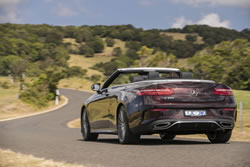
You have to wait for it to kickdown enough to get going. That said, it’s very happy when cruising, and is very, very smooth. So smooth, in fact, that you’ll struggle to tell when it switches off during its stop-start procedure (which is used to save fuel).
Speaking of fuel use, Merc claims that the E300 Cabriolet sips just 7.4L/100km – not bad for a large drop top.
And there’s plenty of tech. Push the cruise-control stalk down and the steering wheel starts moving, by itself, keeping the vehicle in the centre of the lane. The radar-based cruise control monitors the car in front, maintaining a set distance. All the safety systems on the car are on high alert, with cameras tracking traffic in each direction as well as the lane markings and kerbs.
This, folks, is the closest we can get to autonomous driving in this country. It’s not foolproof, of course. When the lane marking runs out, a steering wheel icon on the digital dash goes from green back to grey, alerting the driver to the fact that it can’t ‘see’ anything to judge how straight it’s tracking. And on super-tight bends, the system can’t react quick enough to keep the car turned in sharply enough.

So, yes, there’s some way to go before a proper self-driving production car hits our roads. At the moment, it’s a very cool party trick.
Of course, its other party trick is its roof. It’s a multi-layered canvas top that can be lowered or put in place in around 20 seconds. You can even convert it at speeds of up to 50kmh, which is handy if you notice an approaching rainshower.
Keep the rain away from the interior, too, as there’s a lot of electronic trickery going on. There are two large screens that cover both instrumentation and infotainment, with just about every known bell and whistle (and a few others) thrown at it. The oft-used line is that today’s smartphones have more processing power than was needed to send man to the moon. By that logic, the E-Class is a rolling NASA command centre, capable of putting the Mars missions to shame.
The steering wheel has left and right touchcapacitive pads that you can swipe to change preferences and push to confirm, controlling either the infotainment or instrument screen respectively. There’s a rotary controller, and hovering above it another touch pad through which you can write letters or numbers with your finger, narrowing down contact lists, for example. Or you can swipe through radio stations or zoom in on the sat-nav map. The voice commands enable true hands-free driving, while cameras all around allow for easy parking, or you can ask it to park itself.
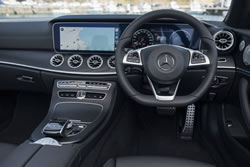
There’s a Burmeister sound system which is unbelievably clear and has plenty of bass, but unfortunately, the sound system wanted to dampen the music’s loud portions instead of leaving it at its original volume. It’s a shame because we’d love to hear a faithful reproduction.
Then there’s the safety suite. Of course, there are airbags galore, seatbelt pre-tensioners, and the usual barrage of acronyms like ABS, EBD, ESP, ASR, and the list goes on.
But perhaps the most interesting is the side-impulse seat system. In the event of a side impact, normally the car relies solely on side intrusion beams to absorb the initial impact. If the impact is even more severe, the side airbag inflates to cushion the passenger.
But Merc’s new system uses the seats to further protect its occupants. Sensors in the doors detect a crash and in milliseconds the bolsters inflate to push the passenger toward the centre of the car, putting more distance between them and the inevitable impact.
It also protects you if the car is in the unfortunate situation of rolling over. Large bars pop up from behind the rear seats, protecting the occupants from being crushed if it ends up upside down.

There’s also air-scarf, which blows warm air onto your neck, which when combined with the seat heaters and climate control will keep you warm even if the air outside is cold. And when the roof is down, there’s “Air Cap” which uses a wind deflector that rises from between the rear headrests and a small flap extending from the windscreen’s top panel, directing windflow up and over the cabin. It means you can have a conversation with the roof down, even at the national limit.
So, it’s loaded with gadgets, but the more layers of technology you put between the car and the driver means that we’re getting more and more isolated from our driving. Or so you may think. In fact, the electric steering has been weighted so that it doesn’t feel too artificial, while the paddle shifters allow you to take manual control of the nine-speed auto.
Being rear-wheel-drive, it can be hustled along at a cracking pace, and even when optioned with 20-inch wheels it never feels harsh over rubbish inner-city roads. In fact, the suspension does a remarkable job of hiding the size of those wheels, creating a beautiful ride, which only deteriorates if the road is harshly cracked. Only smaller wheels would solve that.
 Inside, it’s a return to form. With far less clutter than the previous model, the new E-Class is simple without being austere. Judicious use of open-grain wood veneers gives a warmth and high-end feel, while true metal accents punctuate the cabin.
Inside, it’s a return to form. With far less clutter than the previous model, the new E-Class is simple without being austere. Judicious use of open-grain wood veneers gives a warmth and high-end feel, while true metal accents punctuate the cabin.
The leather is, as you’d expect, soft and pliable, and the seats, with their clever door-mounted controls, are fabulous over long distances. Ambient lighting with unlimited colour choices also bathes the cabin in a cool glow that can be separated into front and rear zones. As a four-seat mode of transport, there’s not a lot wrong with it.
But would you be better off with a cheaper ($13K) coupe version instead? Well, that’s a matter of personal preference. If you do a lot of driving at night, or live in a more temperate part of Australia, then the Cabriolet is a beautiful machine and cossets its passengers wonderfully. It’s just not the cheapest option there is – the three-pointed star up front sort of gives the game away in this respect.
But if you have the budget and you want a great looking, safe, tech-laden, well-built and luxurious droptop, the E-Class Cabriolet is hard to beat.


